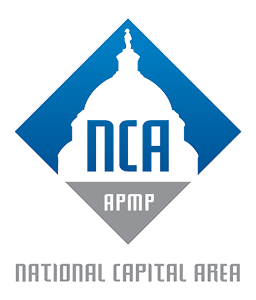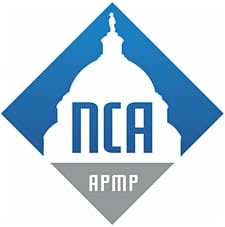Developing a comprehensive and effective PWS is a great way to show the government that you understand the work
 Federal Acquisition Regulation (FAR) 37.602 gives the Federal Government the freedom to decide if the acquiring agency or the bidder prepares the Performance Work Statement (PWS). When the offeror prepares and submits the PWS as part of its technical proposal, often the evaluation criteria give the Source Selection Evaluation Board (SSEB) quite a bit of leeway in evaluating the work statement. The PWS evaluation factor may use subjective words such as “exceptional understanding” and “a comprehensive and effective PWS.” What does this really mean?
Federal Acquisition Regulation (FAR) 37.602 gives the Federal Government the freedom to decide if the acquiring agency or the bidder prepares the Performance Work Statement (PWS). When the offeror prepares and submits the PWS as part of its technical proposal, often the evaluation criteria give the Source Selection Evaluation Board (SSEB) quite a bit of leeway in evaluating the work statement. The PWS evaluation factor may use subjective words such as “exceptional understanding” and “a comprehensive and effective PWS.” What does this really mean?
In a best value trade-off, government evaluators review the PWS for Strengths, Weaknesses, Deficiencies, and Risks to determine the overall score or rating. When the RFP requests that the bidder write the PWS in response to a Statement of Objectives (SOO), bidders must use these performance objectives to craft the tasks, subtasks, deliverables or work products, and performance standards.
How to achieve Strengths
Strengths have merit because they exceed requirements and/or enhance success probability, thus reducing the government’s risk significantly. In evaluating the PWS, government evaluators first assess how well the offeror’s PWS meets the SOO objectives. They also determine whether the bidder proposes innovative work requirements and performance standards that improve prospective outcomes such as quality, quantity, timeliness, or cost reduction.
Evaluation may cover the following:
- Does the PWS map to the SOO?
- How well does the PWS align with the objectives?
- Does the PWS help the government meet or even exceed objectives?
- Does the PWS demonstrate understanding of the complexity of the effort?
- Does the PWS define inputs such as people, materials, facilities, tools, templates, technology; the process (work performed using those inputs); and the desired outputs or outcomes that enhance success probability?
-
Are the proposed performance standards and performance measurement methods effective?
- Will meeting or exceeding performance standards reduce risk and/or help the government meet or exceed objectives?
- Does the PWS include a Performance Requirements Summary (PRS) with methods of inspection and acceptance for inclusion in the government’s Quality Assurance Surveillance Plan (QASP)?
- Does the PWS provide innovative ways to encourage success such as incentives or award fees? Does it include a means to penalize failure such as disincentives?
-
- Do these innovations help the government achieve desired outcomes or even exceed objectives, thus increasing the likelihood of success?

- Do these innovations help the government achieve desired outcomes or even exceed objectives, thus increasing the likelihood of success?
-
How to avoid Weaknesses, Deficiencies, and Risks
Failure to map PWS requirements and performance standards to each of the SOO objectives will most likely result in the SSEB identifying a Significant Weakness or even Deficiency. If the PWS tasks and subtasks lack clarity and detail, then evaluators may identify Weaknesses. Remember, the PWS must state what the contractor must do, but it should not prescribe how to do it. In addition, if the performance measures are too vague and/or lack quantifiable metrics, then the SSEB will likely find higher Risk.
Also, if the PWS reads as a marketing piece that sells the offeror, then evaluators will perceive Risks related to lack of understanding. Passive voice also creates Risk. Avoid lack of clarity as to who is responsible for what by using active sentence construction. Further enhance clarity by using “shall” or “must” for contractor responsibilities and “will” for government responsibilities.
A strong PWS increases PWin
Bidders are often discouraged when the RFP requires them to write the PWS. They lament their inability to present their typical marketing pitches and highlight their corporate capabilities. Think again! Developing a comprehensive and effective PWS is a great way to show the government that you understand the work—as well as how to measure and achieve successful outcomes. A well-crafted PWS provides government evaluators with confidence in your ability to perform successfully on the prospective contract and achieve or even exceed objectives at lowest Risk.
By Lisa Pafe, Vice President at Lohfeld Consulting Group, CPP APMP Fellow and PMI PMP

Lohfeld Consulting Group has proven results specializing in helping companies create winning captures and proposals.
As the premier capture and proposal services consulting firm focused exclusively on government markets, we provide expert assistance to government contractors in Go-to-Market Strategy, Capture Planning and Strategy, Proposal Management and Writing, Capture and Proposal Process and Infrastructure, and Training. In the last 3 years, we’ve supported over 550 proposals winning more than $135B for our clients—including the Top 10 government contractors. Lohfeld Consulting Group is your “go-to” capture and proposal source! Start winning by contacting us at www.lohfeldconsulting.com and join us on LinkedIn, Facebook, and Twitter.




